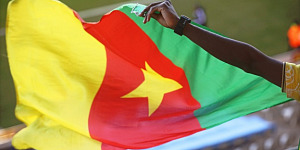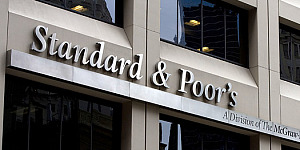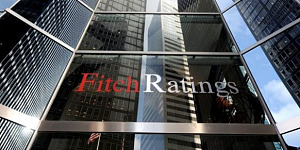itch Ratings has affirmed Cameroon's Long-Term Foreign-Currency Issuer Default Rating (IDR) at 'B' with a Stable Outlook.
A full list of rating actions is at the end of this rating action commentary.
KEY RATING DRIVERS
Cameroon's 'B' ratings balance a low GDP per capital relative to similarly rated peers, weak business environment and governance indicators, against sustained economic growth and low and stable inflation provided by membership of the Central African Economic and Monetary Community (CEMAC) franc zone, which ensures currency convertibility and reduces foreign exchange and liquidity risks.
Political instability is a weakness versus peers and succession to the recently re-elected 85 year-old president, Paul Biya is a risk. Tensions could rise given the worsening of political instability and violence in the two Western Anglophone regions, which has disrupted economic activity and weighed on public spending. The security situation is also still fragile in the far north of the country, and at the border with Central African Republic. Violence between the different communities and political factions in the country could arise in the event of a power vacuum.
Programme implementation under the IMF Extended Credit Facility Arrangement has been mixed, with Cameroon missing its fiscal consolidation target by 1.9pp in 2017. However, the government has demonstrated its commitment to keeping the programme on track. The implementation of structural reforms in line with IMF performance criteria and adoption of a 2018 supplementary budget and corrective measures to meet revised fiscal consolidation targets helped complete the second IMF review in July and secure external official funding.
We forecast the fiscal deficit will narrow to 3.1% of GDP in 2018 from 5% in 2017 and compared with a current 'B' median of 4.3%, supported by higher hydrocarbon receipts due to higher oil prices and rising gas production. Previous revenue-mobilisation reforms, including enhanced tax collection and excise duty, and further upcoming measures to broaden the tax base and remove tax exemptions will boost non-oil revenues. However, we project current spending to rise to 12.4% of GDP (11.5% estimated in 2017) as higher oil prices push up energy subsidies to the state oil refinery, SONARA.
Cameroon's gross fiscal financing needs will decrease to a forecast 6.7% of GDP in 2018 and 5.6% in 2019 from 9.2% in 2017, supported by gradual fiscal consolidation. Multilateral and bilateral disbursements are set to reach USD510 million (1.7% of GDP), including a first tranche disbursed by the IMF and France in July. Private external borrowing and domestic issuance will provide further financing. Official funding will lead to an increase in the share of concessional borrowing in Cameroon's public debt composition, but previous recourse to more expensive non-concessional borrowing has led to an increase in Cameroon's interest burden to a forecast average 5.7% of fiscal revenues over 2018-2020 (2.3% in 2015 before the Eurobond issuance), compared with a current 'B' median of 11.9%.
Implementation risks are high and compliance with the IMF performance criteria will remain challenging. Ongoing social unrest in the Anglophone region, rising fuel subsidies and the financing of the 2019 African Cup of Nations (CAN) are also putting pressures on spending. Weak public finance management, including expenditure control and off-budget spending led to budget over-spending in 4Q17 and early 2018 and could lead to further fiscal slippages.
Fitch forecast gross general government debt (GGGD) will rise to 41.1% of GDP in 2018, from 38.2% of GDP in 2017 and compared with the current 'B' median of 62.9%. The debt statistics include claims from the regional Central Bank (BEAC's statutory advances) of 1.3% of GDP, domestic arrears (expenditure float and arrears to suppliers) of XAF268 billion (1.4% of GDP) in May 2018 (3.6% at end-2017) and SONARA's debt of 3% of GDP. Large contingent liabilities represent a risk to the sovereign balance sheet with SOE's debt estimated at 12.5% of GDP in 2016 by the IMF.
Cameroon's current account deficit will widen to 3.4% of GDP in 2018, compared with a current 'B' median of 3.8%, due to the acceleration in the realisation of investment projects, subsequent surge in good imports and underperformance of crude oil and cocoa exports. We expect the external position to improve as gas exports ramp up and large infrastructure projects in energy and transport increase non-oil exports capacity and support a narrowing of the trade balance. Stable foreign direct investments in large infrastructure and energy projects and external borrowing will contribute to the financing of the current account deficit.
Reserve accumulation in CEMAC stalled in early 2018, due to a contraction in oil production and fiscal slippages in several countries of the zone. International reserves stabilised at USD6.0 billion in February 2018, from USD5.8 billion at end-2017 (or 2.4 months of import cover).
We expect economic growth to pick-up to 3.9% in 2018 and 4.5% in 2019 after decelerating in 2017. The uptick in gas production will partly compensate for a decrease in oil production while infrastructure investment related to the CAN will support construction. Completion of large energy projects will improve electricity supply, foster agriculture and manufacturing activity and support medium-term growth, which we forecast at 5%.
Banking sector health remains weak, although average capitalisation rose by 2pp y-o-y to 10.7% at September-end 2018 and liquidity picked up. However, the sector remains highly exposed to the sovereign, through government securities and financing of government agencies and public related projects. The government's and SOEs' domestic arrears weigh on asset quality, which remains weak and dampens credit growth, with non-performing loans increasing by 25% y-o-y to 15.8% of total loans in September 2018 (13.5% in September 2017). Five small banks are deemed insolvent by the IMF, including three public banks, and their resolution is still pending.
SOVEREIGN RATING MODEL (SRM) and QUALITATIVE OVERLAY (QO)
Fitch's proprietary SRM assigns Cameroon a score equivalent to a rating of 'B' on the Long-Term Foreign-Currency (LT FC) IDR scale.
Fitch's sovereign rating committee did not adjust the output from the SRM to arrive at the final LT FC IDR.
Fitch's SRM is the agency's proprietary multiple regression rating model that employs 18 variables based on three-year centred averages, including one year of forecasts, to produce a score equivalent to a LT FC IDR. Fitch's QO is a forward-looking qualitative framework designed to allow for adjustment to the SRM output to assign the final rating, reflecting factors within our criteria that are not fully quantifiable and/or not fully reflected in the SRM.
RATING SENSITIVITIES
The main factors that could, individually or collectively, trigger positive rating action are:
-A reduction in the budget deficit and the government debt/GDP ratio, particularly if supported by improved management of public finances.
-Improvement in the business climate and growth performance.
The main risk factors that could, individually or collectively, trigger negative rating action are:
-Heightened political instability that significantly affects public finances or the economy.
-Persistent large fiscal deficits or crystallisation of contingent liabilities onto the sovereign balance sheet that lead to a rapid increase in the government debt/GDP ratio, or financing stress.
KEY ASSUMPTIONS
Fitch assumes no break-up of the CEMAC monetary arrangement and no devaluation of the CFA franc against the euro.
Fitch assumes that the oil price (Brent) will be USD70/b in 2018, USD65/b in 2019 and USD57.5/b in2020.
The full list of rating actions is as follows:
Long-Term Foreign-Currency IDR affirmed at 'B'; Outlook Stable
Long-Term Local-Currency IDR affirmed at 'B'; Outlook Stable
Short-Term Foreign-Currency IDR affirmed at 'B'
Short-Term Local-Currency IDR affirmed at 'B'
Country Ceiling affirmed at 'BB+'
Issue ratings on long-term senior unsecured foreign-currency bonds affirmed at 'B'






































